Promotional content: Kopparberg
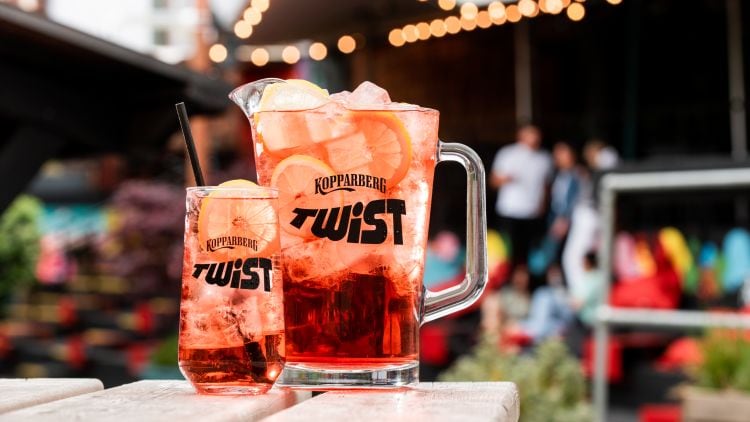
Beyond Cider, Kopparberg’s range of premium flavoured spirits, gin, vodka and rum, are an attractive offering to a young adult drinker looking for an intense fruity flavour and excitement. As young drinkers progress from cider into spirits and cocktails, adding Kopparberg spirit, the number one alcohol brand for young drinkers (18 to 24), is the perfect addition to menus and a great way to attract these valuable younger customers into your venues.
Kopparberg, famous for premium fruit refreshment, has launched the perfect summer serve, Kopparberg Twist. Kopparberg Twist welcome’s consumers into a colourful world of bold and refreshing flavour with a simple serve strategy, the perfect way to enjoy the brand’s delicious spirit range this summer.
Developed for ease of serve in venues, Kopparberg Twist is built in the glass over mountains of ice and consists of 2 base parts of either Kopparberg’s Strawberry & Lime Gin, Vodka or Cherry Rum, 6 parts lemonade and a dash of soda. The perfect blend of ice-cold fruity refreshment. Whilst a simple serve, Kopparberg Twist packs a punch with its tasty and refreshing credentials and is set to be a popular hit amongst young adult drinkers.
With the warm weather here, Kopparberg season is in full flow and Kopparberg Twist represents the perfect summer serve. Best shared in pitchers with friends, Kopparberg Twist is both fruity and refreshing – what’s your Twist?
Sources: Savanta, Top 100 Most Loved Drinks Brand Report, n=48,000, Jan ’21-Apr22.
For more information, click here.
Quick link guide
But you may wonder why you need to improve your back bar or whether there’s anything new you may want to consider stocking. Read on for some inspiration and advice.
In the WSTA Market Report, compiled by the Wine & Spirit Trade Association (WSTA) and CGA in April 2022, the on-trade was making great strides in its recovery from the pandemic as total spirit sales were up 74% year-on-year by volume and 76% in value.
Although all spirits categories have been claiming strong sales during the previous 12 months, Tequila, liqueurs and rum were leading the fightback having recorded the highest percentage growths as of 1/1/22 versus a year prior when the country was in the middle of the Covid period.
Vodka was top of the spirits with reported volume sales of 111,000 hectolitres (HL), a 78% lift for the 12-month period. Some 15.9m bottles of vodka were sold across the on-trade – although this represented strong growth since the previous market report, it had still not reached pre-pandemic levels. Flavoured vodka also enjoyed impressive sales growth and makes up about 8% of the total vodka on-trade category.
Gin was in second spot overall having increased volume sales by 51%, selling 11m bottles in the on-trade.
Liqueurs were close behind having enjoyed £807m worth of sales over the 12 months, which was double its value (£385m) than in the previous year, with non-cream liqueurs being the standout in the sector, accounting for 87% of the liqueurs market in volume.
Rum clocked up 50,000HL of sales – a rise of 92% from data collated in December 2020. Whisky saw volume sales up 57% and value sales 59%. Tequila saw its growth double from the previous year in both volume and value. Brandy, the smallest category in the on-trade, saw volume sales lift by 33%.
All of this shows the on-trade way ahead of the off-trade, surely by virtue of the more stringent restrictions imposed on pubs and bars as opposed to supermarkets. It is still worth noting out of the seven spirits categories, only three are showing signs of growth: Tequila, liqueurs and rum.
Meanwhile, the data showed Italian wines had continued to be the most popular in the UK on-trade with volume sales increasing by 34% to reach 276,000HL versus figures from December 2020.
The biggest gains in the wines on-trade over the past 12 months was in Champagne where sales grew to 24,000HL (up 80% year-on-year), which is equivalent to 3.2m bottles sold across the on-trade.
Sparkling wines also enjoyed on-trade growth with sales volume of 105,000HL – the equivalent to 14m bottles sold over the past 12 months, according to the statistics compiled in January 2022.
Still wines overall enjoyed good growth with 639,000HL sold (up by 24%), which is 85m bottles while fortified wines volumes rose by 28% year-on-year to 2,000HL sold over the period.
After the success shown by Italian wines, imports from France, New Zealand and Argentina were among the top countries for most growth by sales volume with France having a 31% year-on-year volume sales spike.
The off-trade told a very different story with total wines (still, Champagne, sparkling and fortified) sales over the 12-month period were down 3% in volume with a flat performance for value year-on-year. Only sparkling wines (up 9%) and Champagne (up 11%) showed volume growth year-on-year.
Premium experiences
Ian Macleod Distillers, which counts brands Edinburgh Gin and London Hill Gin in its portfolio, believes customers have enjoyed being back in on-trade venues and are seeking more premium experiences.
UK trade & consumer marketing director Johna Penman says consumers are looking for “the theatre of serve that they haven’t been able to recreate or experience at home during the pandemic” with cocktails being a key part of this since reopening, trending up 75%, according to a CGA reopening survey.
“Flavoured gins also remain one of the most valuable spirits segments within on-trade,” Penman adds. “By stocking flavoured gins, operators will give customers the opportunity to opt for a gin that can be served with tonic or added to fizz to create a serve that looks and tastes premium. While pink gins remain the number one seller in Scotland, citrus flavours account for 33% of all flavoured gin sales, so it’s important to stock new citrus flavours too.
She adds Edinburgh Gin’s award-winning London Dry Classic gin is the brand’s signature spirit and also used as a base for all of its flavoured gins and gin liqueurs.
London Dry Gin still accounts for over 60% of the overall UK super and ultra-premium London Dry category, according to IRI date to 26/12/21 and CGA data to 26/02/22. Within its range is Seaside – a distinctive gin created in collaboration with Heriot-Watt University’s Brewing and Distilling Masters students. 1670 is a gin that celebrates the relationship between botany and gin distilling made in partnership with Royal Botanic Garden Edinburgh. While the last gin in the London Dry range is Cannonball, which is bottled at 57.2% ABV with the higher alcohol content said to allow distillers to add more botanicals.
Alcohol-free options
Of course, not everyone will be drinking alcohol at your venue so offering a good range for those not imbibing could see an entire group come to you led by the person avoiding alcohol.
Non-alcoholic drinks expert and founder of mindful drinking movement Club Soda Laura Willoughby MBE says whatever the purchasing policy of a pub is for its alcoholic offer, it must replicate that for its alcohol-free range.
She explains: “See what options your wholesaler has. Don’t be afraid to contact producers direct and conduct some sampling as a team to decide on what fits your venue. Alcohol-free wine is changing and there are many award-winning brands out there like Noughty and Oddbird.
“For spirits, especially if you specialise in classic cocktails, you can find direct replacements that are alcohol-free. It is also possible to mix cocktails with a lower ABV – The Hedonist in Leeds has a one-unit cocktail list it finds boosts sales at the start of the week.”
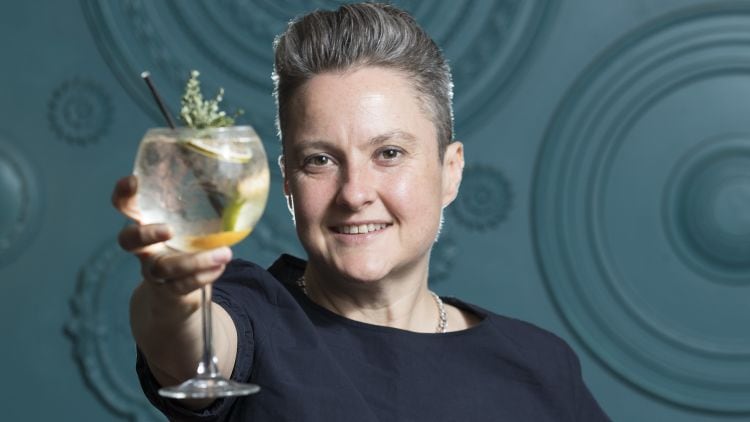
When it comes to the demands of customers, Willoughby (pictured above) explains what this means in the no-alcohol section for different age groups, occasions and the season.
“The types of drinks people want are no different than it is with alcohol – red wine in the winter, rosé and Italian spritz in the summer and seasonal fruits in sodas and cordials,” she says.
“When it comes to alcohol-free, a bigger consideration is when in the week it is and what time of day. Most people’s moderation strategies are based on days off (start of the week) and not drinking during the day – so why not have a drinks menu that targets customers who would normally avoid the pub if they are not drinking? No one should absent themselves from their local because they don’t feel there will be something for them. Let’s surprise and delight them and reacquaint people with their local during the week.”
Cider’s role
Kopparberg said after numerous lockdowns and even more economical challenges on the horizon, consumers are looking for on-trade venues to offer something they can’t easily do at home.
A spokesperson for the brand said: “Cocktails are clearly a section of the menu that can deliver this but when skillset, speed of serve or actual spend limits driven by customers limit this, simply elevating perfect serves with the addition of syrups or bitters for example, as well as delivering the serve in an ‘Instagrammable’ fashion is a great way to meet their demand.
“Also look for sharing serves as a great way to drive volume, as well as efficiency behind the bar. This is basis behind the Kopparberg Twist; a simple but elevated serve, delivered as a single and pitcher serve with accompanying PoS.
“Alternatively, Kopparberg-flavoured spirits make the perfect foundation for simpler cocktails; with the spirit being able to play the role of spirit and liqueur in many cocktails. This allows venues to improve speed of serve by reducing build complexity while still offering a premium cocktail.”
Promotional content: Bidfood
Wines less travelled – a whole new world in your glass
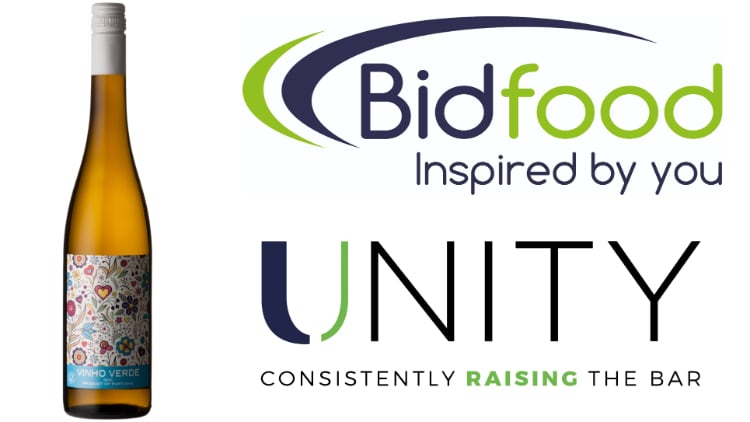
Explore the familiar but from different lands in your next glass of wine.
It’s easy to fall into the habit of placing the same wines on your menu and having them as your go-to bottles because they’re safe and predictable. But, there’s a way to pique customers’ interest and take them on a trip without catching a flight. Why not steer away from New Zealand Sauvignon Blanc and land with an English Bacchus with a similar light and lifted citrusy flavour profile.
Unity wine ambassador, Lee Isaacs, has just the top tipple tips to help appeal to your sense of adventure and stand out from the crowd:
1. Look at what works
Look at your current wine offering and see what works. Does a certain grape variety or region prove to be popular among your consumers?
2. Talk to your suppliers
Use your supplier’s expertise to find something that’s close to your popular menu options from a style point of view. Think hearty reds and aromatic whites.
3. Do it by the glass
Introduce these new wines to your consumers by having a wine of the month and serving it by the glass rather than the bottle. If it proves to be popular, add it to your menu by the bottle!
4. Food pairings
Have a specials board advertising dishes of the day? On the same board, write a less travelled wine that will pair perfectly with each dish. For example, linguini studded with mussels, clams and juicy prawns marries up beautifully with a glass of Portuguese Vinho Verde.
5. Staff encouragement
As well as training, give your staff an incentive to encourage them to recommend more interesting and unusual choices that will wow your customers. Perhaps the one to sell the most bottles of German wine wins a hamper.
For more information, click here.
Wine-based cocktails thriving
With wine in mind, Roberta Neave – wine and soft drinks category buying manager at Star Pubs & Bars explains how pub operators could be using wine to drive sales: “We are seeing a big increase in category fusion, and specifically, wine-based cocktails and spritz, think Aperol and Campari Spritz, and anything that has an aperitivo look and feel.
“These serves are great for adding incremental sales as they are the opening drink of the evening before customers transition to a more familiar repertoire of wine, beer or spirits.
“As sparkling wine, such as Prosecco, has become relatively mainstream in the past couple of years, there’s an opportunity for pubs to experiment with trade-up sparklings that sit in the space between Prosecco and Champagne. Products to look at include Prosecco rosé, Prosecco col fondo (unfiltered Prosecco), crémant, Cava and cap classique. These can be offered by the glass to encourage consumer trial as they are cheaper than Champagne.”
Neave (pictured below) says consumers have been trading up and becoming more experimental when going out. Two years ago Pinot Grigio and Merlot were the norm but now consumers are looking for more premium New Zealand Sauvignon Blanc, Prosecco and Argentinian Malbec.

She adds: “Sparkling is no longer considered just for celebrations. It is now mainstream. Its share of wine sales is up 19% (v pre-pandemic according to Star managed pubs) and Champagne up a massive 91%. Rosé is up 7% at mainstream community pubs as people branch out from red and white.
“Pubs are also broadening their ranges, looking at exploratory wines from places like eastern Europe and the Middle East and offering organic, natural, and even orange wines.”
Passion for the environment
Promotional content: Lanchester Wines
New to the Lanchester Wines portfolio – Cameleon Organic Malbec
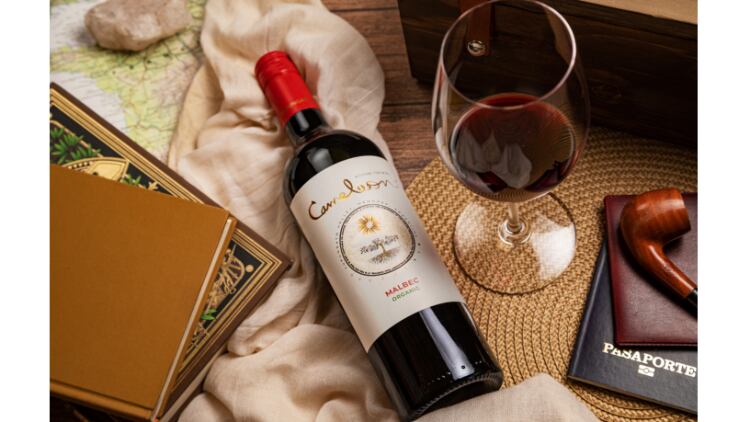
As the great Charles Darwin said: “It's not the strongest of the species which survives, nor the most intelligent, but the one that is most adaptable to change.”
There's a reason this quote is on the label of Cameleon Organic, symbolising the story of the Bousquet family who left their native France and settled in Argentina. And, now in its fourth generation, Domaine Bousquet is the most awarded organic winery in Argentina
So what about the wine? This 100% Malbec is deep violet in colour with aromas of red and black fruits. On the palate, it has notes of blue and blackberries with soft and elegant tannings. No oak.
Made with grapes grown in the Uco Valley at the foot of the Andes, 1,200m above sea level. The valley’s low temperatures allow optimal grape development and maximises quality.
For more information, click here.
Wine supplier to the on-trade Lanchester Wines says sustainability is key to securing drinkers in the future.
Director of sales Mark Roberts states: “The pandemic caused us all to look at things differently, including wine. Sustainability has never been so important, indeed more than three quarters (77%) of wine drinkers say they try to lead environmentally friendly lifestyles.”
He adds, for pub operators, bulk wine offers environmental benefits with CO2 savings of up to 40% compared to bottled wine.
The definition is wine that is shipped in containers (ISO tanks, Flexitanks, etc) rather than in bottles, which is then bottled in the UK. A 20ft container can hold 13,200 75cl bottles, which is the equivalent of 9,900 litres of wine while a flexitank in the same space can hold 24,000 litres of wine. Roberts says this saves about 2kg of CO2 per km.
He adds: “As the quality of wine bottled in the UK is arguably just the same (if not better) as those bottled at source, bulk wine can be a credible way for operators to source premium wines without the premium price tag.”
Meanwhile, the business cited research that showed post-lockdown sales of cocktails rose by 40% as consumers sought drinks they couldn’t make at home with wine cocktails being a focus.
Roberts says: “Both still and sparkling wines are the obvious starting point, however, fortified also provides an excellent base for cocktails while offering better margin but lower alcohol than spirits. Dry white ports have delicious flavours of citrus zest, apricot, tangerine and ginger, making an excellent basis for a cocktail – they can also be used in much the same way as gin in cocktails or as an addition to add sweetness.”
Twists and turns of flavour
Bidfood’s Unity Wines & Spirits head of marketing Matt Towe gives his predictions for the year ahead. He says: “Twists on the classics, personalisation and the use of local spirits are set to dominate in 2022. While the classics like Mojitos, Espresso Martinis and Pina Coladas aren’t going anywhere, we know that consumers are wanting something unique in their glass.
“Why not try locally produced spirits or ingredients for a bespoke cocktail that embodies the flavours of the area it is served in? Think of a refreshing spritzer using the finest local strawberries and garnished with the finest local ingredients.
“Rum remains the most popular spirit used in cocktails, featuring in many of the most popular cocktails such as Mojitos, Daiquiris and Pina Coladas. However, Tequila is set to rise in popularity as more people are appreciating not just the taste, but the process of making the spirit.”
Towe adds customers want to see a pub offer something different to the usual cocktail as well and suggests a Mojito would benefit from having a flavour added to it.
“We’ve seen a surge in flavours like rhubarb, gooseberry and orange marmalade in spirit drinks and 81% of adults want to see new flavours from their favourite brand,” he says. “Give your consumer that edge, the ability to stand in the spotlight with their drinks choices because they want personalisation and exclusivity. New flavours from favourite brands make a strong argument for established brands to consider the creation of on-premises-only variants.”
He also says targeting younger consumers could pay dividends too. “When looking at the younger patrons of pubs and bars, the amount they are willing to pay for food and drink pairings shoots up to 58%.
“Another upside is that the 18 to 24-year-olds visiting these establishments are interested in seeing sharing menus, suggesting that a range of platters, each paired with a bottle of wine, should appeal to friends who are out to have a good time.”
Demand for premium spirits
Ten Locks, which is an importer and distributor of a portfolio of products – largely spirit-based – believes the hospitality sector is becoming increasingly diverse and tuned into the consumer, and says providing premium spirits is a way to continue this “simply and credibly while still honouring the intimate experience pubs so beautifully offer”.
Head of Commercial Becky Davies says: “The growth and demand of premium spirit sales during the pandemic is something that still hasn’t fully filtered through to the pub yet. It means there’s a real opportunity for many venues that isn’t being realised and should be a focus in the year ahead.
“Premium spirits with high-quality mixers, great glassware, plenty of ice and fresh garnishes are enough to satisfy what consumers expect from their local.
“They don’t tend to come to the pub for high level mixology or adventurous cocktails but do need to be engaged and understand that they’re buying a quality offering operating at a higher level than your typical pour.
“According to the latest WSTA report, spirits and RTDs are driving on-trade growth, so venues can show a real point of difference by simply showcasing that they use top quality mixers and excellent spirits on the drinks menus, and then delivering this beautifully.
“Our message to operators is to leverage parts of the category they already offer – gin, vodka and rum – but find brands within this that bring more to the table.”
Rum moves
Harry Coulthard, co-founder of Tidal Rum, says rum is coming of age as peak gin is passing.
Coulthard explains: “With longer, warmer days comes a longing for a refreshing drink that hits all the right spots. While gin may have been the go-to a few years ago, slowly but surely rum is becoming more and more popular. A report by Campari Group UK earlier this year shows a growth of 1.7% in the past year, in the on-trade, making the UK the third largest rum market in the world.
“Driving this increase has been a number of trends such as premiumisation, sustainability, and innovative flavours. In the Campari Group Survey, it showed that more than two thirds of UK consumers are happy to spend more for a quality drink – with a third of these consumers drinking rum regularly, highlighting the opportunity for the on-trade to boost the frequency of these premium occasions by stocking a range of high-quality rums.”
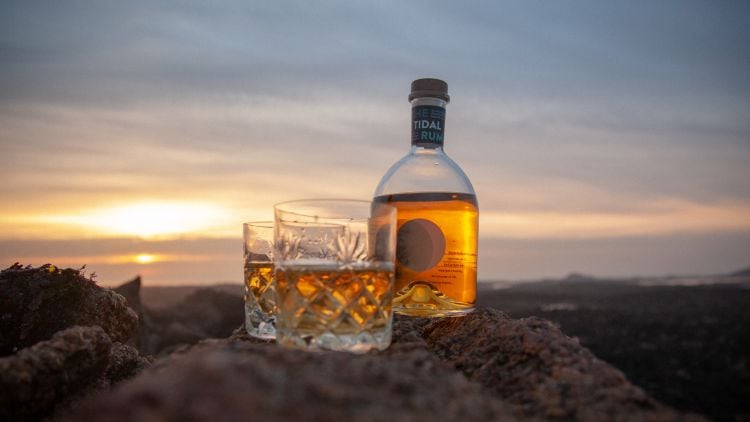
Coulthard says Tidal Rum is one option pub operators could take on board, saying it is a light and refined premium spirit. After being distilled in the Caribbean, the rum is then infused with marine botanicals sustainably foraged from the shores of Jersey, such as lightly oak-smoked Pepper Dulse.
Aged in oak casks, the blend comes from rums in Trinidad, Jamaica, Barbados and the Dominican Republic.
Emergence of Tequila
Tequila producer Proximo Spirits sees a long-awaited emergence for Tequila in the UK on-trade.
In the US, Tequila is the third largest spirit category with a 16.5% share, just behind vodka. Whereas, in the UK, Tequila represents just a 1.3% share of the total spirits category.
During 2017 and 2021, in the UK, the value change CAGR (compound annual growth rate) of Tequila was 13.3%, the fastest growing category other than gin, whereas in the US, tequila’s value change CAGR was 20% and represented the fastest growing spirit segment.
Proximo said: “Covid-19 had a huge impact on consumer drinking habits, both in and out of the home. The Tequila category was the hardest hit by the pandemic. This effect can be attributed to Tequila being less associated with at home drinking and more often consumed as a shot.
“With many people now making up for lost time and exploring more with beverages out of the home, Proximo Spirits is predicting a busy summer for the Tequila category with The Paloma (Cuervo Tequila and grapefruit) and The Margarita predicted as best-sellers for 2022.”
The business is positive about the spirit and says it caters for an array of serves, from cocktails and mixed drinks to shots and neat serves.
It adds: “There are a number of benefits to stocking Proximo Spirits for pubs and bars individually. There are opportunities for promotions on selected lines throughout the course of the year, staff training, tastings, PoS, serve suggestions and bespoke menu offerings.
“To maximise sales further, it’s key to tap into trending products. Therefore, with the mighty Margarita now the world’s no.1 cocktail, there are plenty of opportunities to use Proximo Spirits’ world-leading Tequilas to create unique and classic mixes.”
Affordability crucial
Wine expert Kingsland Drinks says good-quality wines that are affordable must be stocked at pubs, which include varieties such as Sauvignon Blanc, Pinot Grigio, Merlot and Shiraz.
Head of marketing for brand and insight Charles Overin says: “As well as the standard 75cl bottles, it’s also worth stocking 187ml formats. Single-serve 187ml bottles are ideal for pubs as they guarantee a fresh serve of wine every time.”
He adds sparkling wine is also an important category in pubs, especially Prosecco as Kingsland Drinks has seen an increase in sales and demand for Prosecco Rosé while wine cocktails and spritzes are becoming increasingly popular.
“Having good value, recognisable wines available to consumers can certainly help create a USP versus other local venues,” Overin says. He adds the company’s Bear and Star range of wines, which is exclusive to pubs and bars, has expanded to include varietals from emerging areas such as Moldova.
Overin says operators can use their wine list to signpost wines that might offer a higher margin, or to encourage trade-ups, for example, from a lower priced white wine to a Southern Lights Marlborough Sauvignon Blanc.
He adds: “From our insights, younger consumers are purchasing Rosé Prosecco and wine-based cocktails – both pre-mixed and made on the spot. Older drinkers are looking to discover new wines and are curious about the story behind the bottle – from its sustainability credentials, the producers, the region, the tasting notes and food pairings.
“We’re seeing younger consumers over index on drinking wine in pub and late-night bars while older groups tend to consume wine in more food-driven venues.”
Kingsland Drinks’ Overin explains the on-trade is bouncing back but not quite at pre-pandemic levels. During the past 12 months total spirit and wines sales were up by 41% in volume year-on-year as consumers ventured back to on-trade premises.
On the future, he says: “It’s difficult to make predictions in an ever-changing economic climate but we’re expecting a slowdown in wine sales when the cost-of-living crisis truly bites and Brits may reduce visits to pubs and bars after the summer season.
“To maintain custom and drive repeat visits and purchases, offering good value wines, such as Bear and Star, could present a lucrative opportunity for licensees at a time when every sale counts. Consumers are going to want value for the money, without compromising on taste.”
The options are clear to see that improved options in your spirits and wine offer can be complemented with wine-based cocktails and alcohol-free choices too – and a better stocked bar could help drive profits at a time when they are needed more than ever.

